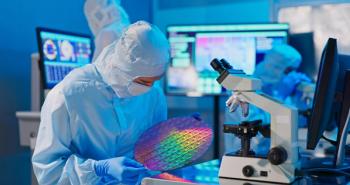
Analytical Glow Discharges in Argon Lead
Glow discharge (GD) spectroscopy is a well-established method in the elemental analysis of metals, coatings, and surface-modified materials.
To better understand the mechanics behind charge transfer reactions, Zdeněk Weiss, head of the laboratory at the Institute of Physics of the Czech Academy of Sciences in the Czech Republic, conducted a study to explain why argon ions and analyte ions react more strongly in analytical glow discharges than in other similar plasmas (1).
Glow discharge (GD) spectroscopy is a well-established method in the elemental analysis of metals, coatings, and surface-modified materials. Examples of GD spectroscopy include glow discharge optical emission spectroscopy (GDOES) and glow discharge mass spectrometry (GDMS). GDOES is powered by Grimm-type lamps, which are light sources meant for “emission spectroscopic routine investigations of solid planar samples” (2).
Excitation and ionization of analyte atoms usually happens independent of analyzed matrices. This is because the process usually happens in an argon plasma which strongly dilutes the analytes. Yet this has not proven to be infallible; in fact, regarding GDOES, scientists cannot fully explain the excitation and ionization by asymmetric charge transfer (ACT) reactions between argon ions and neutral analyte atoms (Me0), which is surprisingly strong in analytical glow discharges.
“There must be a reason for the discrepancy between theory and the experimental evidence about charge transfer reactions in emission spectra,” Weiss said in an email to Spectroscopy. “Either the assumption that the other plasmas are similar to the Grimm-type discharge does not hold, or there is something significant concerning the Grimm-type discharge. We don't know.”
Weiss formed experimental Boltzmann plots for glow discharge emission spectra and an inductively coupled plasma. He also modeled a Grimm-type discharge, which suggested that the charge transfer emissions mostly stem from the cathode sheath, because there are many collisions between the analyte atoms and argon ions that have been accelerated in the cathode fall.
However, this experiment did not explain the anomalously high rates of charge transfer reactions in this system compared to those of other plasmas. In fact, the amount of emission put the legitimacy of the glow discharge spectra Boltzmann plots into question and these plots “cannot be interpreted in the conventional way, Weiss said.
Weiss said that our understanding of what is happening in these plasmas is “far from satisfactory,” and that further research must be conducted to understand this phenomenon, specifically the observed features of glow discharge excitation.
“If the peculiar features described in the paper get clarified, there might be a chance to get rid of some matrix effects in chemical analyses by GDOES spectroscopy, [such as] those caused by the presence of hydrogen,” he said.
Reference
(1) Weiss, Z. Assessing the role of asymmetric charge transfer reactions in analytical glow discharges in argon. Spectrochim. Acta Part B At. Spectrosc. 2023, 207, 106756. DOI:
(2) Grimm, W. A new glow discharge lamp for optical emission spectral analysis. Spectrochim. Acta Part B At. Spectrosc. 1968, 23 (7), 443–454. DOI:
Newsletter
Get essential updates on the latest spectroscopy technologies, regulatory standards, and best practices—subscribe today to Spectroscopy.





